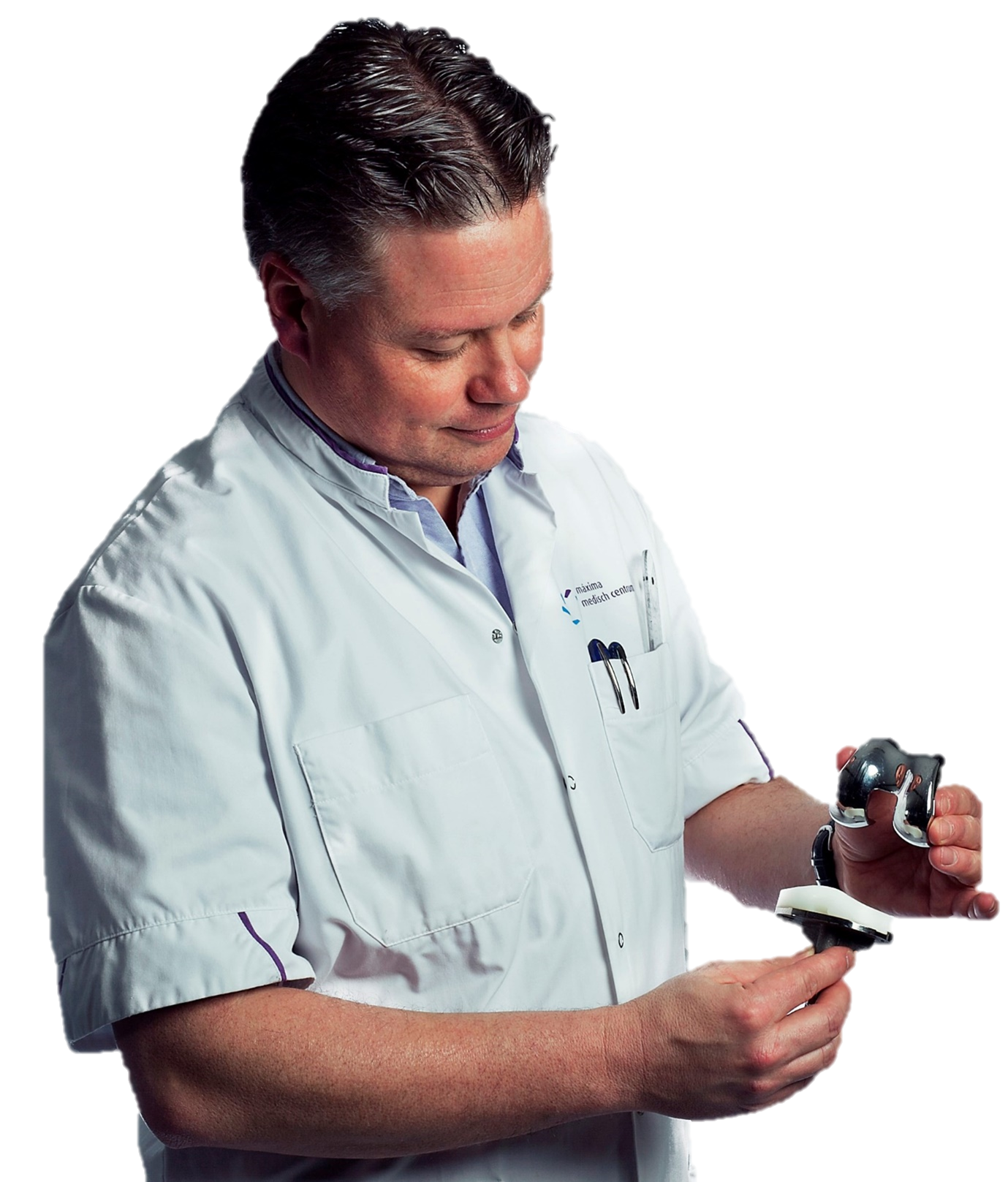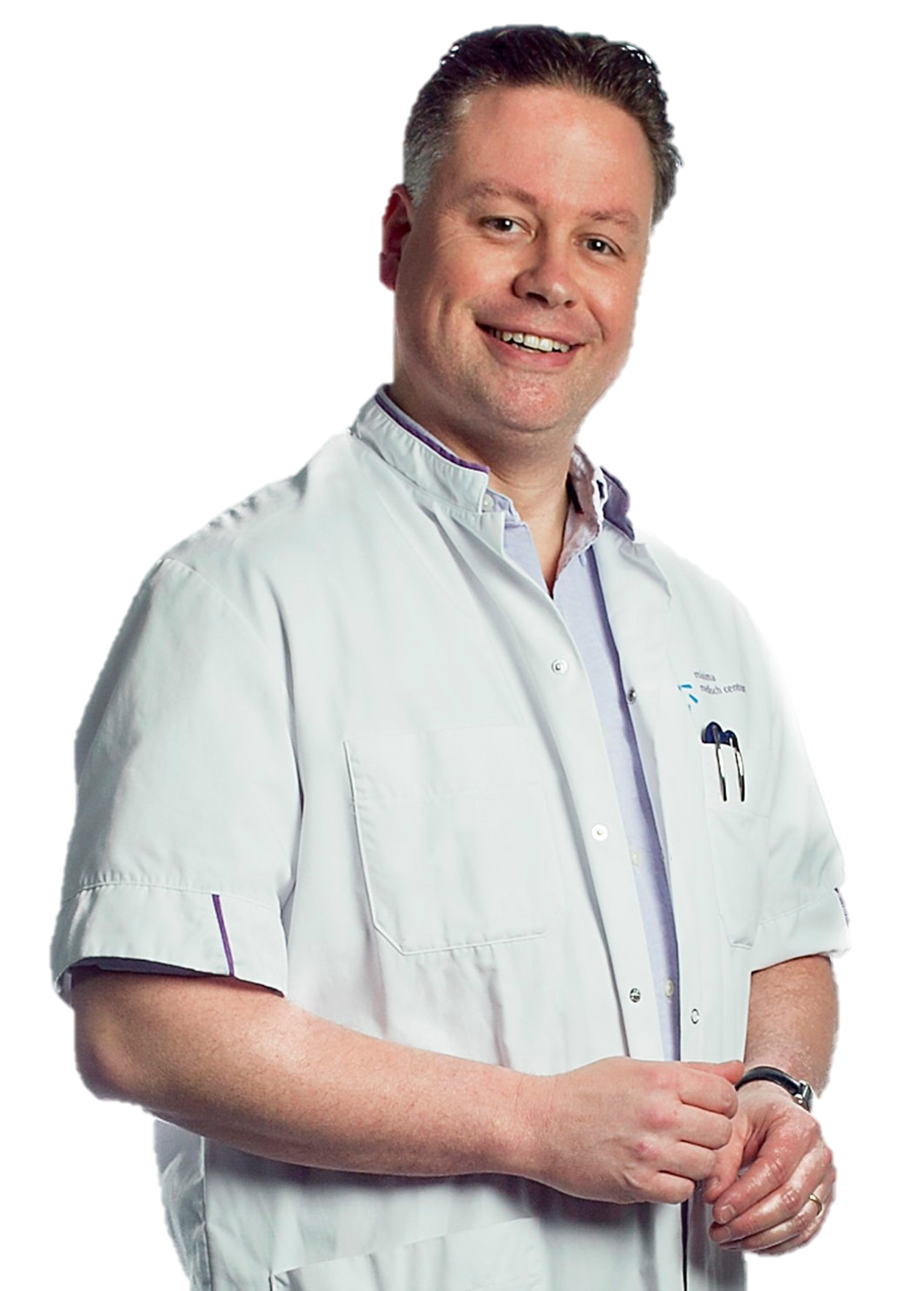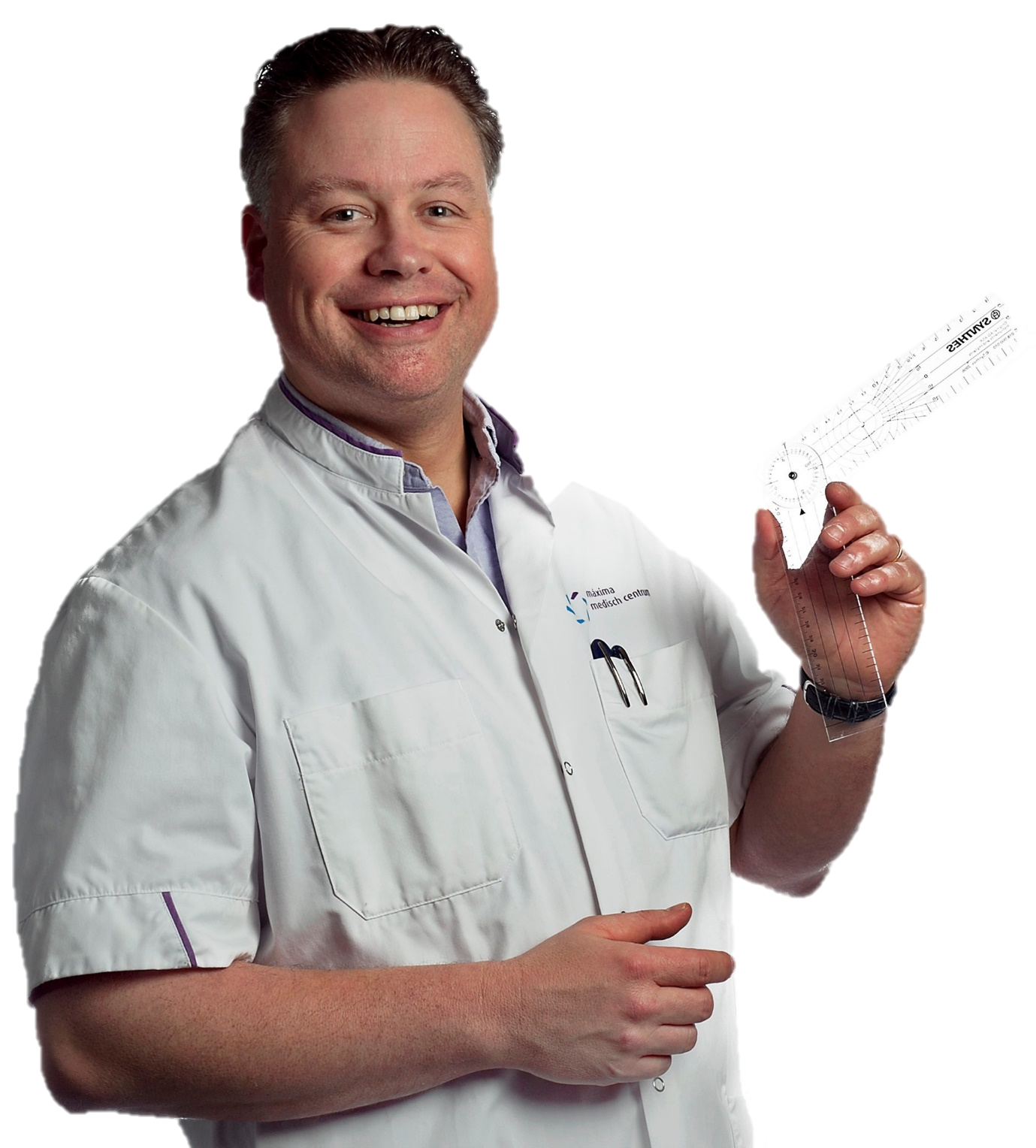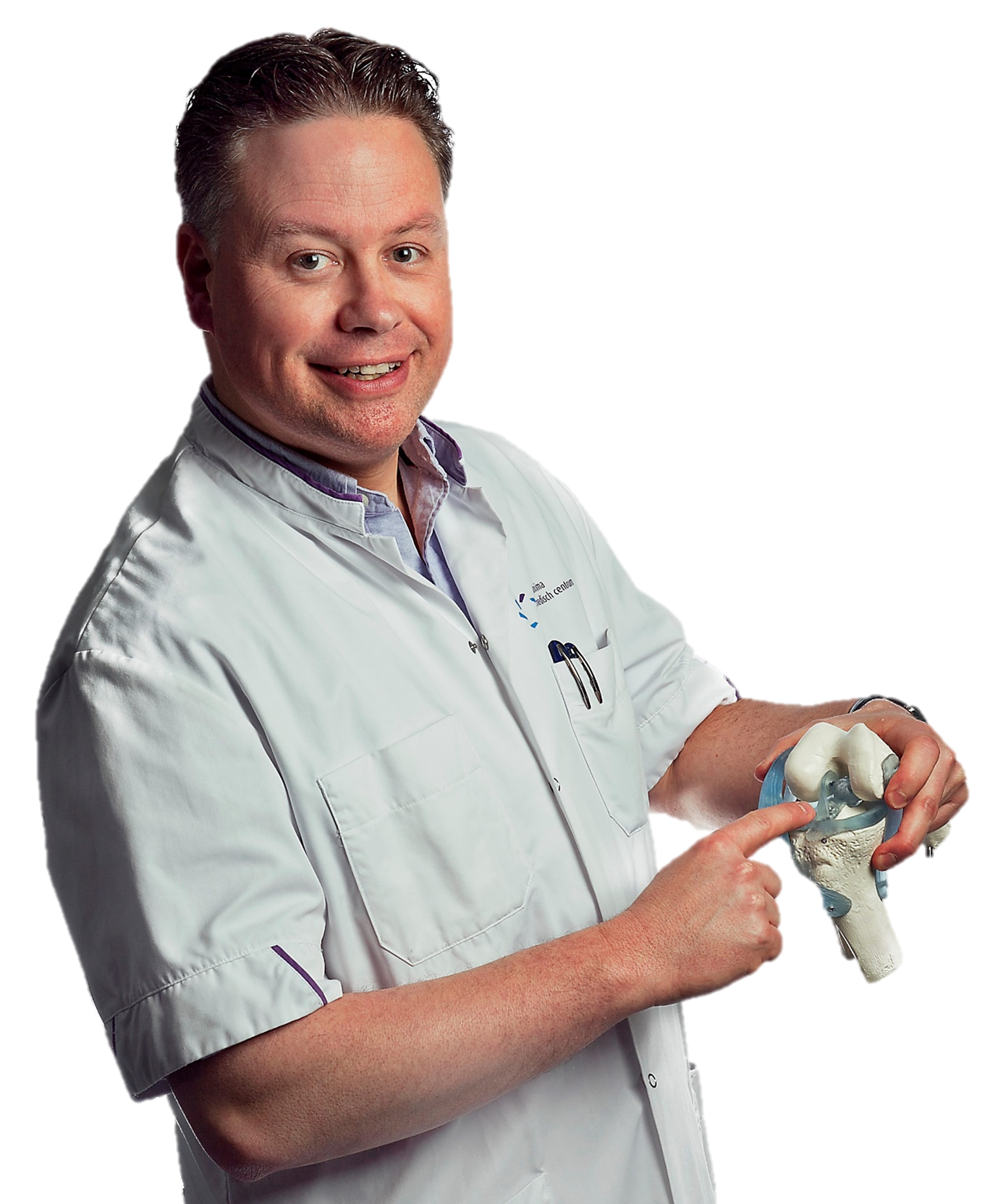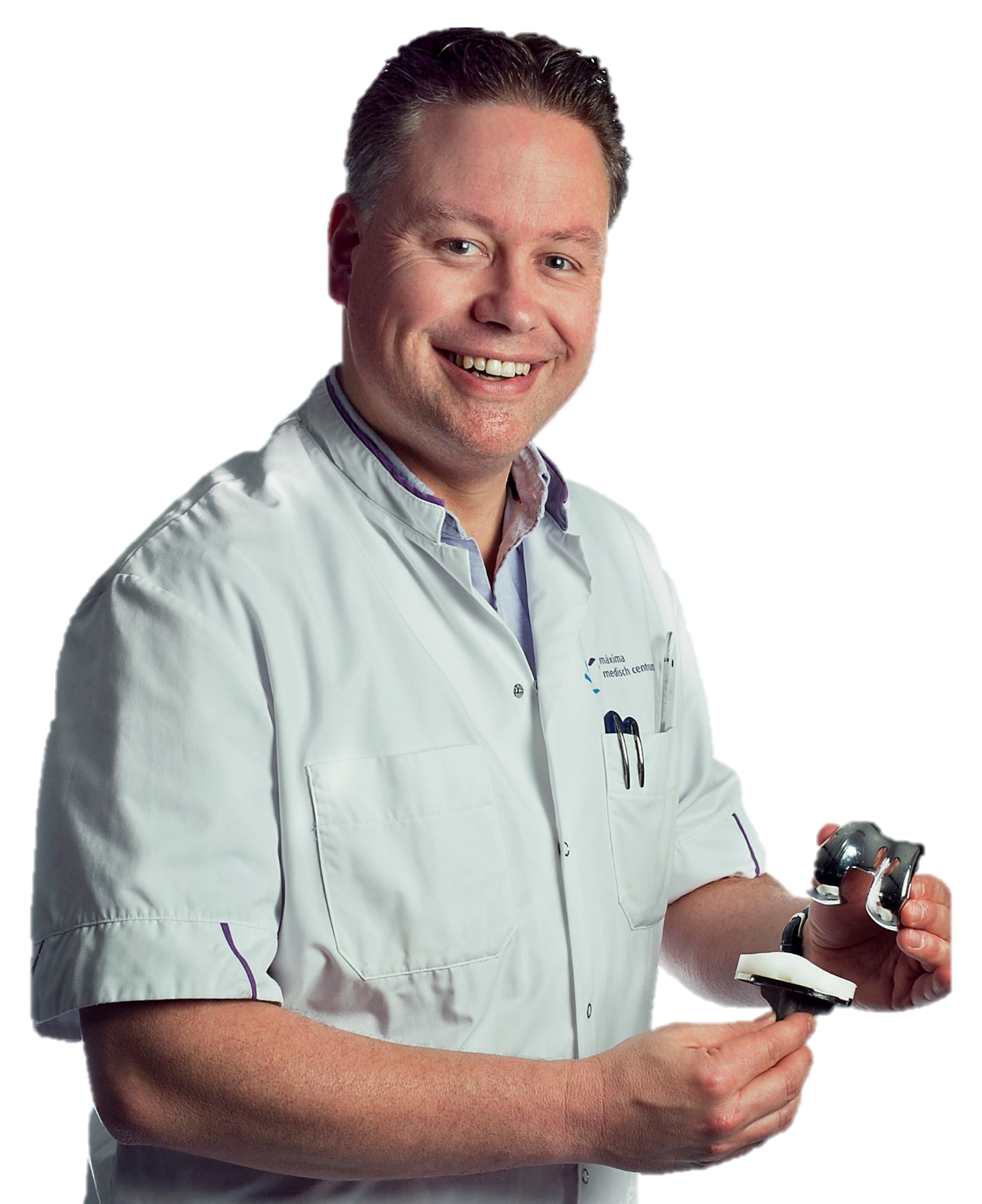STARR Study Group, Meuffels, D. E., &...
Culturing human osteoarthritic osteochondral explants

Current knee osteoarthritis (OA) treatments are sub-optimal and not long-lasting. Within the osteoarthritis moonshot, osteochondral implants for focal cartilage defects are developed which need to regenerate cartilage and bone and integrate with the adjacent tissues. The challenge is to explore and optimize this in an in vitrosetting, to identify the most promising implants for the ultimate animal studies. This may be done by inserting the implant in an osteochondral defect that is created in an osteochondral explant in culture. To do so, it is necessary to first demonstrate that an osteochondral explant can be kept in culture for a longer time while preserving its properties and composition. Aim of the present study is therefore to characterize human osteochondral tissue at various stages of OA, and to develop an approach to culture OA tissue for 28 days.
Osteochondral explants (Ø10mm) with either a smooth or fibrillated cartilage surface, representing different OA stages, were harvested from human tibia plateaus obtained from total knee replacement surgeries at the Maxima Medical Centre, Eindhoven and were cultured in a double-chamber culture platform (figure 1).[1]Fresh and cultured explants were evaluated for their viability, biochemical tissue content and cellular gene expression. Moreover, sections were stained with safranin-O/fast green for analysis of the proteoglycan and collagen distribution and to determine the grade of OA using the Mankin scoring system.[2]
Statistical differences between smooth and fibrillated cartilage were found in biochemical and histological analyses of fresh cartilage (average Mankin score of 3.4 vs. 5.1, proteoglycan content of 8.4 ± 1.7%dwvs. 13.5 ± 3.2%dw, collagen content of 39.9 ± 3.8%dwvs. 29.3 ± 4.6%dwrespectively). Preliminary results of the cultures reveal that chondrocyte viability was maintained over 28 days, but bone tissue was less viable. Analysis of the cultured samples is ongoing to explore whether the biochemical and histological composition of the cartilage is preserved over time.
[1]Andrea Schwab and others, ‘Ex Vivo Culture Platform for Assessment of Cartilage Repair Treatment Strategies’, Altex, 34.2 (2017), 267–77 <https://doi.org/10.14573/altex.1607111>.
[2]H J Mankin and others, ‘Biochemical and Metabolic Abnormalities in Articular Cartilage from Osteo-Arthritic Human Hips. II. Correlation of Morphology with Biochemical and Metabolic Data.’, The Journal of Bone and Joint Surgery. American Volume, 53.3 (1971), 523–37.

